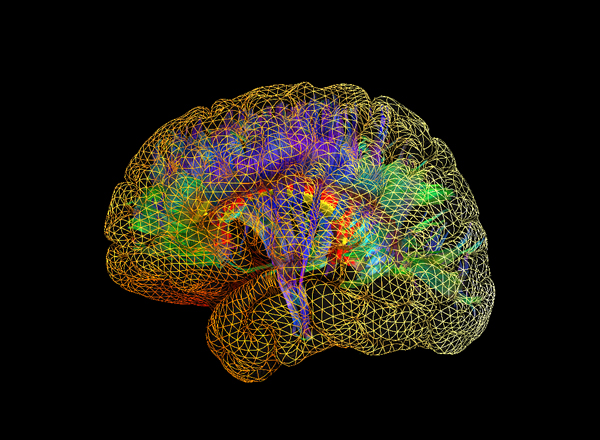CQDM, Brain Canada Foundation and the Ontario Brain Institute made the announcement at the annual conference of the Canadian Association for Neuroscience. Six Canadian research teams share a total investment of $ 10 million, through the strategic “Focus on Brain” initiative.
The projects will unite 33 researchers from a dozen organizations in academia and SMEs across Canada to develop cutting-edge tools, technologies and platforms designed to accelerate the discovery of new, safe and effective drugs for brain and nervous system disorders to benefit patients and their families. Thanks to CQDM’s unique mentoring program, these researchers will also have the opportunity to collaborate with senior scientists from the pharmaceutical industry who bring industrial expertise and support to the projects, to help better align research with the needs of industry and patients.
“The Government of Canada is dedicated to helping increase our understanding of how the human brain works and how to best protect it and treat disorders of the brain and nervous system using innovative and unique solutions,” said the Honourable Rona Ambrose, Minister of Health. “We are proud to support Brain Canada and its partners in fostering the very best Canadian neuroscience research and accelerating discoveries to improve the health and quality of life for Canadians who suffer from brain disease and mental disorders.”
“This is the first time that CQDM funds as many research projects at once, thanks to the partnerships we have established with Brain Canada and OBI. We joined forces to mobilize the best researchers in Canada. These projects reflect the pan-Canadian collaboration and talent, and capitalize on synergies in the public and private sectors, as well as inter-provincial resources. We are proud to support true innovative translational research in Canada that will certainly make a difference in neuroscience,” said Mario Chevrette, Vice President, Scientific Affairs of CQDM.
The McGill-affiliated projects include:
The eye: a window to the brain Jean-Paul Soucy
To date, Alzheimer’s disease remains incurable and can only be diagnosed once symptoms begin to manifest themselves via the presence of β-amyloid plaques (Aß) and tau strands in the brain. The difficulty in developing new drugs for this disease is largely due to the difficult and late diagnosis of the disease. The ability to diagnose Alzheimer’s disease at an early stage would afford a better understanding of its genesis in addition to radically transforming the design of clinical trials in order to develop new treatments. The eye provides a window to the brain through the retina, which may also have Aß plaques in individuals suffering from Alzheimer’s disease. It is suggested that Alzheimer’s disease is detectable by a simple non-invasive analysis of the eye. Jean-Paul Soucy and his team believe that is so and will develop a retinal imaging platform using fluorescence combined with advanced imaging instruments to detect Aß plaques in the retina of patients. This imaging platform will enable the detection and early diagnosis of the disease in at-risk patients which will facilitate the development of drugs to treat Alzheimer’s disease.
Glutamate: the messenger whose flow of information is crucial in studies of brain diseases Don van Meyel and Keith K. Murai
The purpose of this project is to use a revolutionary protein engineering technology called Cyto-iGluSnFR and adapt it in order to discover new drugs leading to the treatment of a variety of brain and eye diseases. This innovative platform relies on a modified protein which allows the detection of glutamate levels that enter cells. Glutamate is an important messenger that carries information from one neuron to another, and the means to study it are currently very limited. Studying glutamate is important because its measurement and control can allow researchers to determine its effect on some neurological diseases such as stroke, glaucoma and Alzheimer’s disease. Glutamate levels in the brain are precisely regulated by glial cells located in close proximity to neurons, through transport proteins on their surface called EAATs. The adaptation of the Cyto-iGluSnFR to these brain cells will allow the screening of millions of chemical compounds that will lead to the development of drugs that will effectively target the EAATs, allowing the modulation and restoration of glutamate flow into glial cells, required for proper brain function.
To successfully cross the blood-brain barrier Jean-Paul Soucy, Louis Collins, Gassan Massarweh
The blood-brain barrier protects the brain from potentially toxic compounds from the bloodstream, but also restricts access of therapeutic agents to the brain. The drug delivery to brain targets is seriously hampered by the tight walls of the cerebral blood vessels. One of the approaches being considered in order to cross the barrier uses the transport receptors in blood vessels that carry natural chemicals and nutrients necessary for proper brain function. The approach of the team is to use an antibody fragment that binds to transport receptor to carry, like a Trojan horse, a therapeutic payload through the barrier. Specifically, the drug will be chemically bonded or fused to the natural or modified blood-brain barrier carrier thereby gaining access to brain targets. The project is designed to demonstrate that a payload, in this case, a candidate treatment for Alzheimer’s disease, can be effectively transported across the human blood-brain barrier.

